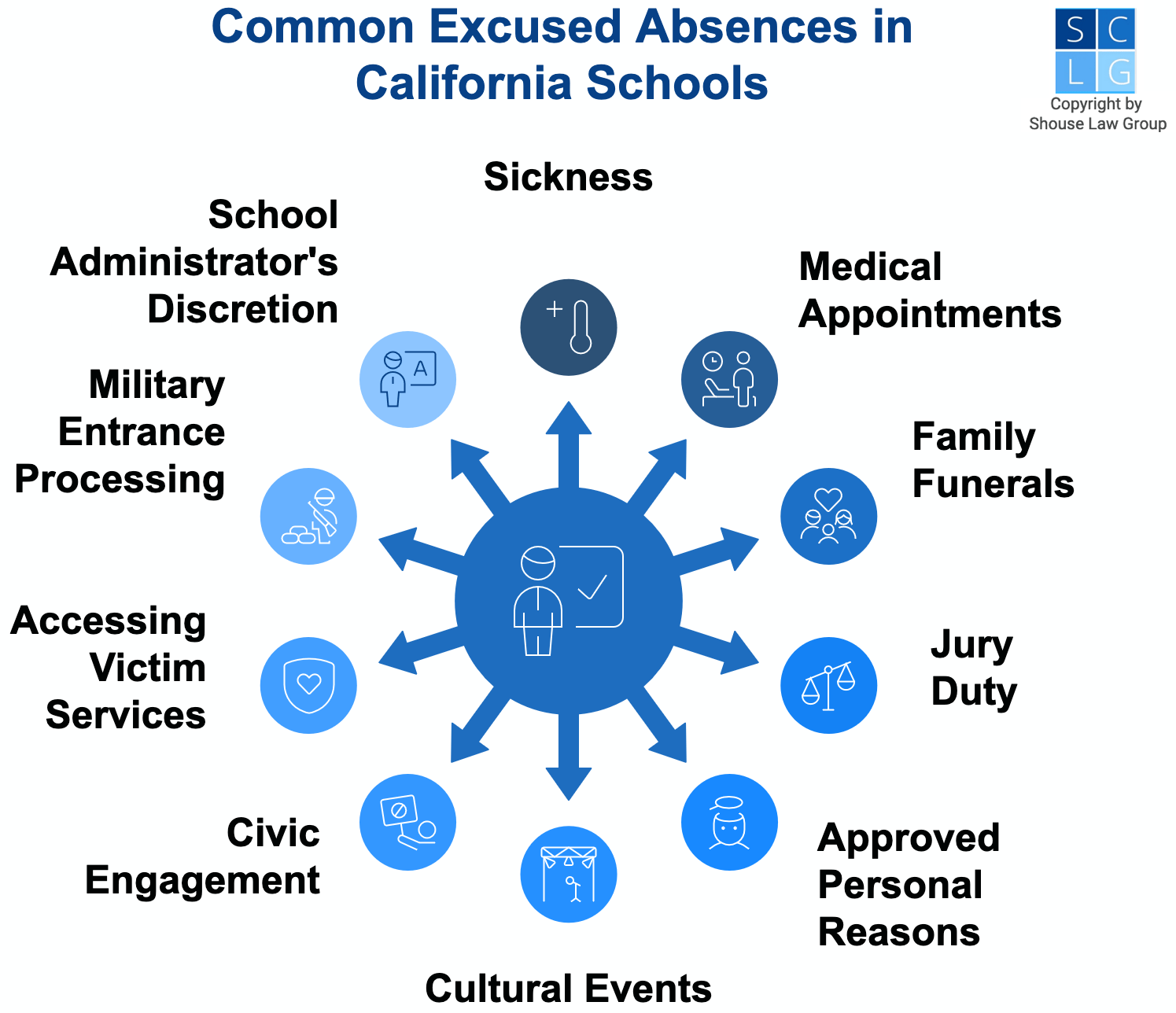California truancy laws require children to go to school. The state laws apply to children between the ages of 6 and 18 who attend either:
- elementary school,
- middle school, or
- high school.
Failure to attend school carries consequences for not only the truant student but also possibly for their parents.

In this article, our Los Angeles criminal defense attorneys discuss what you need to know about truancy laws and penalties in California.
1. Meaning of Truancy
In California, a child is “truant” if, without a valid excuse, they are:
- absent for 3 full days in a single school year,
- tardy 3 times in a year,
- absent 3 times for more than 30 minutes, or
- any combination of the above.1
Meanwhile, a child is “chronically truant” if they missed 10% of the school year, from the date of enrollment to the current date.2
Examples
- Becky skips the whole school day of public school to go to the beach after having already been tardy once and missed an hour of class once. Since none of the absences were excused, she is a truant.
- Josh misses 3 of the first 26 school days. Since none of the absences were excused, he is a chronic truant.3

California truancy laws require children to go to school.
2. Excused Absences
In California, minors can be truants only if their school absences are unexcused. There are 15 valid excuses for a school absence:
- The student is sick,
- A local health officer has issued a quarantine,
- The student has a medical, dental, vision, or chiropractic appointment,
- So the student can attend an immediate family member’s funeral services,
- For jury duty,
- The student is the custodial parent of a child who has a medical appointment or is sick,
- For justifiable personal reasons that have been approved by the school,
- To serve as a member of a precinct board for an election,
- To spend time with an immediate family member on active military duty,
- To go to the student’s own naturalization ceremony and become a U.S. citizen,
- Participating in a cultural ceremony or event,
- For middle or high school students engaging in a civic or political event (usually limited to one school day per year),
- Accessing services from a victim services organization or agency,
- The student’s military entrance processing, or
- At the discretion of the school administrator.4
It is also not considered truant if the child is being educated through an alternative education method, such as:
- Home-schooling,
- Attendance at a private school,
- Private tutoring, and
- Advanced placement education.5
Finally, teens who are 16 or older and have a qualifying part-time job may not have to attend regular high school full-time. Instead, they might qualify for an alternative program like continuation school.6

Minors can only be truants if their absence from school was unexcused.
3. Truancy Penalties
Most California schools have School Attendance Review Boards (SARBs) which can:
- strip truant students of school privileges,
- require students to attend counseling, and
- set up meetings between students with their parents and teachers to discuss how to solve the truancy problem and seek support services.7
If the SARB’s actions do not reduce the school absences, it can refer the student to the local Juvenile Court or district attorney. They can impose more severe measures against a truant student, such as:
- requiring attendance at makeup classes,
- juvenile court probation,
- declaring the minor a ward of the court,8 and/or
- delaying, suspending, or revoking a student’s driving privileges.
Throughout, these penalties focus on incentivizing the minor to attend school rather than punishing them. However, when police find truant students, it is not uncommon for them to be under the influence of alcohol or drugs. This may lead to such juvenile charges as:
- Marijuana possession (11357 HS),
- DUI (23152 VC),
- Zero alcohol policy violation for underage drivers (23136 VC), and
- Underage DUI (23140 VC).
Standard juvenile penalties include fines, community service, counseling, rehab, and/or a suspension of driving privileges.9
4. Penalties for Parents
If a School Attendance Review Board (SARB) thinks a parent is allowing their child to miss school, the Board can refer the case to the district attorney. Each referral is handled on a case-by-case basis.
Depending on the circumstances, parents or guardians of truant children in California may face such charges as:
- Failure to supervise a child’s school attendance (270.1a PC),
- Contributing to the delinquency of a minor (272 PC) and/or
- Child neglect (270 PC).
These are all misdemeanors carrying up to one year in jail or fines of up to $2,000 (or $2,500 for contributing to the delinquency of a minor). However, it may be possible to plea bargain the charge down to an infraction or dismissal.10

Both truant students and their parents face consequences in California.
Additional Reading
For more in-depth information, refer to these scholarly articles:
- Truancy: It’s Not About Skipping School – Child and Adolescent Social Work Journal.
- Truants’ Perceptions of Family Factors as Causes of School Truancy and Non-attendance – Journal of Psychology.
- Contributing to Delinquency: An Exercise in Judicial Speculation – Akron Law Review.
- Factors Contributing to Juvenile Delinquency – American Institute of Criminal Law & Criminology.
- Contributing to Delinquency – St. Louis University Law Journal.
Legal References
- California Education Code 48260.
- California Education Code 48263.6.
- During the COVID pandemic, many students without access to the internet were involuntarily truant because they lacked the resources to attend online learning.
- California Education Code 48205.
- California Education Codes 48222, 48224, 48800, and 51745.
- California Education Codes 49110, 48230, and 48410.
- See California Education Code 48200 – 48361. Cal. Forms Pleading & Practice (Matthew Bender) ch 513 “Schools: Student Rights And Responsibilities.
- In re A.N. (Cal. 2020) 462 P.3d 974, 9 Cal. 5th 343.
- See Juvenile Justice in California, California Department of Justice, 2022.
- See, for example, People v. Vincze (Cal. App. 1st Dist. 1992), 8 Cal. App. 4th 1159.
